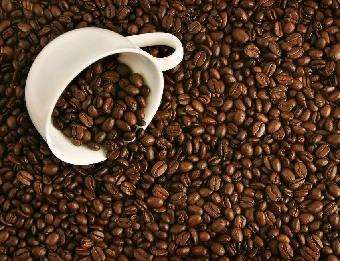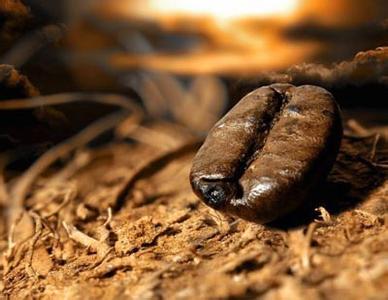What is the taste of Salvadoran coffee beans and the characteristics of Salvadoran coffee beans
Follow the caf é (Wechat official account vdailycom) and found that Beautiful Cafe opened a small shop of its own.
Taste of Salvadoran coffee beans
Taste characteristics: sour, bitter, sweet mild and moderate.
Flavor: balanced taste and good texture
Characteristics of Salvadoran coffee beans
El Salvador (ElSalvador) is one of the small countries in Central America, where coffee is light, fragrant, pure, slightly sour and characterized by excellent balance of flavor. It is a specialty of Central America. With sour, bitter, sweet and other taste characteristics, the best baking degree is moderate, deep.

The history of Salvadoran coffee
The Republic of El Salvador is located in the north of Central America. The word "El Salvador" means "volcanic country". The area is 21300 square kilometers. Population 4.99 million (1983), Indo-European mixed race accounts for 84%, the rest are Indians and whites. Most residents believe in Catholicism. The official language is Spanish. The capital, San Salvador.
Colonial period
Before the Spanish colonists invaded, it was inhabited by Indian Pierre, Lunka and Mayans, engaged in fishing, hunting and agriculture, and lived a primitive tribal life. From 1524, Spanish colonists gradually conquered the region; in 1527, El Salvador came under the jurisdiction of the governor of Guatemala. The Spanish colonists carried out an entrusted guardianship system and brutally exploited the Indians. There was a large-scale Indian uprising in 1537. At the end of the 18th century, with population growth and agricultural development, the colonists intensified their political oppression and economic plunder of El Salvador. Father J.M. Broke out in 1811 and 1814. Delgado and M.J. The uprising against Spanish rule led by Arze lit the spark of the independence movement.
After independence
Under the influence of the Latin American independence movement, El Salvador declared its secession from Spanish rule on September 15, 1821. He joined the Union of Central America in 1823. In 1834 the federal capital moved from Guatemala to El Salvador. In 1840, the Salvadoran conservative F. Malespin established military rule and promulgated the Constitution on February 18, 1841, officially named the Republic of El Salvador. After 1871, the regime was controlled by liberals. Before World War I, the economic development of El Salvador was faster than that of other Central American countries. The unique natural conditions are conducive to the development of coffee production. Commerce and handicrafts are more active, and transportation is also more developed. In the middle of the 19th century, foreign capital began to seep into El Salvador, controlling railways, trade and other important sectors of the economy.
After the first World War
The Salvadoran regime is mainly controlled by the Melendez and Quinones families. The capitalist economic crisis from 1929 to 1933 dealt a heavy blow to El Salvador's coffee production and export, resulting in the bankruptcy of a large number of farmers, the intensification of class contradictions and political instability. In December 1931, M.H. Martinez launched a coup and established a military dictatorship. In January 1932, the people of El Salvador held an uprising with 40,000 participants against the dictatorship and once established a revolutionary regime. Martinez was forced to resign in 1944 amid a wave of anti-dictatorship. From 1948 to 1960, the Unified Democratic Revolutionary Party, which represented the interests of the big bourgeoisie and coffee plantation owners, came to power, deterred by the people's struggle against dictatorship, and took some measures to expand democracy and develop economy and social welfare. In 1961, J.A. Rivera Carvalho staged a coup and organized the National Concord Party to strengthen military rule. In the 1970s, the struggle of workers, peasants, staff, teachers and students against military dictatorship and fighting for democracy, freedom and economic interests was growing day by day, and guerrillas and revolutionary organizations advocating armed struggle emerged one after another. In October 1979, A.A. Mahano and J.A. Gutierrez launched a military coup to overthrow C.H. Romero Mena government, set up a civilian and military ruling committee, and has the support of the United States. The ruling committee carried out land reform and bank nationalization, trying to ease social contradictions while stepping up the crackdown on the growing guerrillas. After 1980, various revolutionary organizations and guerrillas gradually joined forces, formed a revolutionary democratic front and persisted in armed struggle. In June 1984, J.N., leader of the Christian Democratic Party. Duarte was elected president.
Important Notice :
前街咖啡 FrontStreet Coffee has moved to new addredd:
FrontStreet Coffee Address: 315,Donghua East Road,GuangZhou
Tel:020 38364473
- Prev

Flavor of Salvadoran coffee, characteristics of Salvadoran coffee
Following Cafe Review (official Wechat account vdailycom) found that Beautiful Cafe opened a small shop of Salvadoran coffee beans flavor: balanced taste and excellent texture suggest roasting method: medium to deep, there are many uses of quality beans: Salvadoran SHB taste characteristics: sour, bitter, sweet mild and moderate. Salvadoran coffee is tied with Mexico and Guatemala.
- Next

Characteristics of Salvadoran coffee beans, introduction of Salvadoran coffee beans
Following Cafe Review (official Wechat account vdailycom) found that the coffee of El Salvador Cafe opened a small shop of its own the characteristics of El Salvador coffee is a specialty of Central America, where the coffee body is light, aromatic, pure and slightly sour. Like Guatemala and Costa Rica, coffee in El Salvador is graded according to altitude, and the higher the altitude, the better the coffee. Best
Related
- Detailed explanation of Jadeite planting Land in Panamanian Jadeite Manor introduction to the grading system of Jadeite competitive bidding, Red bid, Green bid and Rose Summer
- Story of Coffee planting in Brenka region of Costa Rica Stonehenge Manor anaerobic heavy honey treatment of flavor mouth
- What's on the barrel of Blue Mountain Coffee beans?
- Can American coffee also pull flowers? How to use hot American style to pull out a good-looking pattern?
- Can you make a cold extract with coffee beans? What is the right proportion for cold-extracted coffee formula?
- Indonesian PWN Gold Mandrine Coffee Origin Features Flavor How to Chong? Mandolin coffee is American.
- A brief introduction to the flavor characteristics of Brazilian yellow bourbon coffee beans
- What is the effect of different water quality on the flavor of cold-extracted coffee? What kind of water is best for brewing coffee?
- Why do you think of Rose Summer whenever you mention Panamanian coffee?
- Introduction to the characteristics of authentic blue mountain coffee bean producing areas? What is the CIB Coffee Authority in Jamaica?

